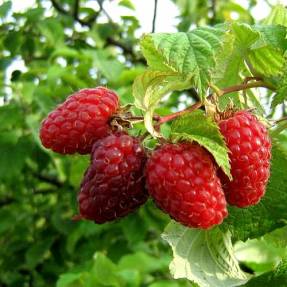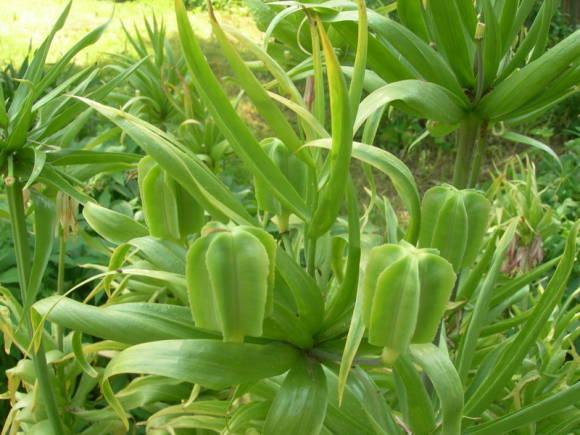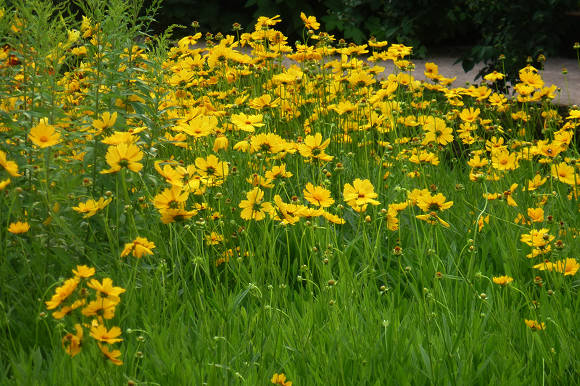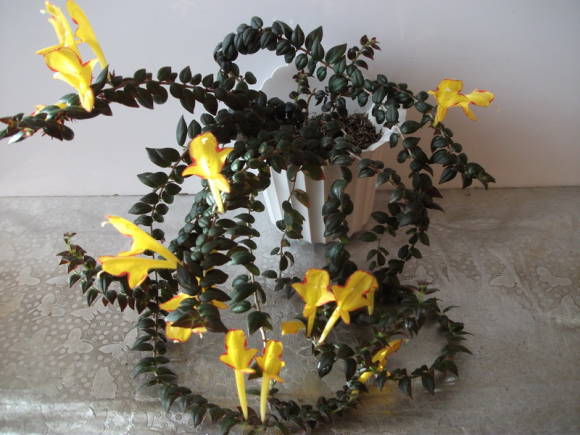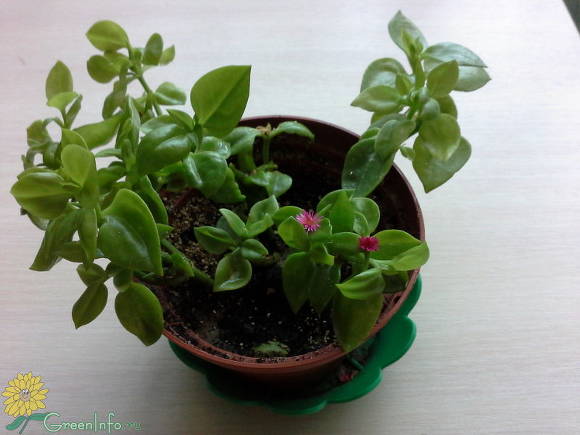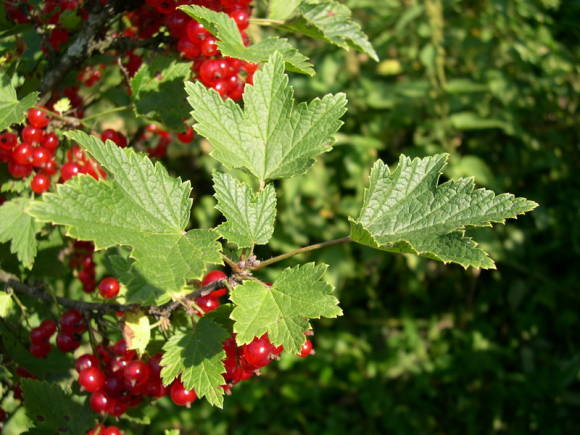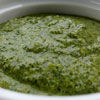
This plant is quite accessible to everyone, but, unfortunately, it is rarely grown. However, it deserves more widespread use in gardens. Liana forms a mass of dazzling flowers that adorn the landscape in late summer and autumn, until the very frost.
Blade kvamoklite (Quamoclit lobata) now more often referred to the genus Ipomoea under the name lobed morning glory(Ipomoea lobata). Also often found under the old name mine lobata (Mina lobata). The plant comes from the tropical regions of South and Central America, where it can bloom all year round. In the bindweed family, it is a close relative of the purple morning glory (see Purple morning glory), although its exotic flowers differ from the wide open funnel-shaped flowers characteristic of the morning glory.
It is a more graceful, delicate plant with thin, bronze-crimson stems that extend at an acute angle from the main stem. In nature, it is a perennial climbing liana up to 5 m high. Rather, it is a juvenile. In temperate climates it is grown as an annual and reaches a height of 2-3 m. It is twisted around the support with stems.
The leaves, indeed, very much resemble purple morning glory - rather large, three-lobed. Some people compare them with the wings of a soaring hawk, and the flowers - with hundreds of burning candles, so they look from afar. Indeed, the tips of the flowers shine through in the sun, resembling tongues of flame. And inflorescences, in which flowers of different shades are distributed along the axis, are compared to fireworks.
Small tubular flowers from 2.5 to 5 cm long are arranged in clusters of 9-12 on one side of the stem, and tremble from the slightest breath of breeze, like a flag. Flowers in the inflorescence open upwards. At first, they are dark red, gradually changing color to orange, then to creamy yellow and almost white. Long white stamens protrude from the flower towards the end of flowering. For the unusual arrangement of flowers and the corresponding tones, the plant received the everyday name of the Spanish flag.

The flowers are odorless but rich in nectar and attract butterflies. The plant blooms from July, with the onset of cold weather the leaves turn red, competing in beauty with the inflorescences.
There is a form Citronella - with paler flowers.
Reproduction of lobed kvamoklite
Like any thermophilic annual, lobed kvamoklit is grown from seed through seedlings.
Seeds should be sown 4-6 weeks before the intended planting in the ground, not earlier than mid-April. Sowing is best done in individual compost pots with a diameter of 9 cm to a depth of just over 0.5 cm. They resemble nasturtium seeds in appearance and should be handled in the same way as with nasturtium. It is useful to soak the seeds for a day or overnight in lukewarm water, and only then sow. It is advisable to germinate with bottom heating, at a temperature of + 21 ... + 24 ° C.
Seedlings appear in about two weeks (some - after 3 weeks or more) and develop rapidly, soon the plants will need to provide support-sticks. Seedlings should not be planted in open ground until early June, until the danger of night frosts is gone.
When landing in a permanent place, they maintain a distance of 30 cm.
It is a short day plant like many South American plants. Blooms in July, 12 weeks after seed germination.
The plant also reproduces well by cuttings, but in practice this method is rarely used.

Growing conditions for lobed kvamoklite
Pick-up location... Lobed kvamoklit is a thermophilic tropical plant that tolerates minimum winter temperatures down to -5 ° C, needs a warm, protected place in the open sun.
The soil... Prefers chalk or neutral, sandy soils. Too rich soil for the plant is not suitable.
Temperature... The optimum temperature for growth is + 24 ° C, at night - not lower than + 16 ... + 18 ° C. At lower temperatures, plant growth stops.
Watering and humidity... Air humidity is another prerequisite for good plant growth. It is recommended to sprinkle the plant on hot days. But in no case do this in cloudy weather.
The plant needs quite a lot of water. However, the soil must be kept moist, not damp, or there is a risk of root rot development. It is recommended to mulch the soil around the plant with a small layer of compost to retain moisture and discourage weed growth.
Top dressing... Fertilize with liquid mineral fertilizer every 2 weeks. At the same time, observe the development. Overfed plants bloom worse, directing development towards the formation of a leaf mass. For young plants, fertilizers with a predominance of nitrogen are taken, and closer to the flowering period they are replaced with phosphorus-potassium fertilizers.

Use of paddle kvamoklite
For active growth, the plant needs support. The most suitable options are lattice supports, mesh fences. Openwork trellises, obelisks, fastened like a wigwam, metal or bamboo supports are also suitable.
As it grows, some of the leaves from the bottom of the plant can be shed if there is not enough nitrogen. To hide this flaw, the bottom is decorated with other plants.
This plant can also be grown in hanging pots, but it must be borne in mind that the lashes are formed long and weigh a lot, so the fastening must be strong.
Lobed kvamoklit is able to bloom up to 4-5 months, however, in the open field, flowering is pumped earlier due to the onset of cold weather. If you bring the ampel into a cool, light room to the windows facing south or west, flowering will last.
At the end of winter, the plant should be cut off (in the lower part, the stems become woody), then the young shoots again form a beautiful flowing cascade. And cut shoots can be used for cuttings.
Few people know that lobed kvamoklit is an excellent cutting plant, its inflorescences perfectly facilitate bouquets of heavy dahlias. The cut stands in water for 5 days. To keep the flowers fresh longer, the ends of the stems are dipped in boiling water for 20 seconds.
